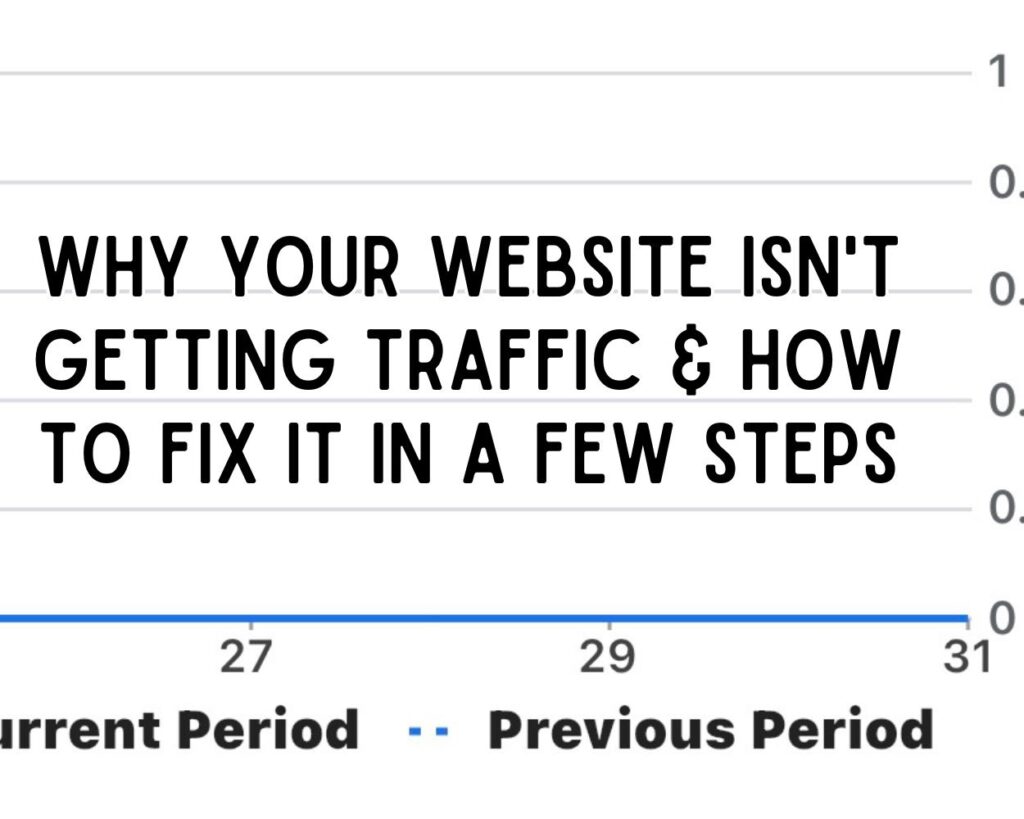The Struggle for Web Traffic
You’ve put in the hard work, creating a website filled with quality articles that you’re proud of. Yet, despite your efforts, your site is a virtual ghost town with little to no traffic. What gives? In this guide, we’ll explore the common reasons why websites struggle to attract visitors and offer actionable solutions to turn things around.

SEO: The Foundation of Web Traffic
Keyword Research
One of the first things to consider is whether your articles are optimized for search engines. This starts with keyword research. Are you targeting keywords that people are actually searching for? Tools like Google Keyword Planner can help you find the right keywords.
Meta Descriptions and Headings
Meta descriptions and proper use of headings (H1, H2, etc.) are also crucial for SEO. These elements help search engines understand what your content is about, making it more likely that your pages will rank higher in search results.
Promotion and Social Media: Spreading the Word
Creating great content is just the first step. You also need to promote it. Are you sharing your articles on social media platforms like Facebook, Twitter, and LinkedIn? Are you engaging with communities related to your content? Promotion is key to driving traffic to your site.
Backlinks: The Currency of the Internet
Quality backlinks from reputable websites can significantly boost your site’s SEO. However, building backlinks is easier said than done. Consider guest posting on other websites or reaching out to influencers in your niche to review your content.
User Experience: First Impressions Matter
A poorly designed or hard-to-navigate website can turn visitors away before they even read your content. Make sure your website is user-friendly, with a clean design and intuitive navigation.
Loading Speed: The Need for Speed
Slow loading times can be a major deterrent for visitors. Use tools like Google PageSpeed Insights to check your site’s loading speed and get suggestions for improvement.
Mobile Responsiveness: Catering to the Mobile Crowd
With a significant amount of web traffic coming from mobile devices, your website must be mobile-friendly. Google’s Mobile-Friendly Test can help you determine if your site meets this criterion.
Analytics: The Power of Data
Setting up website analytics through tools like Google Analytics can provide valuable insights. Track metrics like page views, bounce rate, and traffic sources to understand what’s working and what needs tweaking.
Niche and Audience: Know Your Crowd
Is your content targeted to a specific audience or niche? A well-defined focus can help you attract a more dedicated following.
Regular Updates: Keep It Fresh
Search engines favor websites that are regularly updated. Consistent posting of new articles or updating existing ones can improve your site’s SEO.
Competition: The Battle for Attention
If you’re writing about topics that are already extensively covered by established websites, breaking through can be challenging. Consider focusing on more specific, less-covered topics within your niche.
Turning the Tide
If your website isn’t getting the traffic you hoped for, don’t despair. By addressing the factors outlined in this guide, you can improve your site’s visibility and attract more visitors. It may take time and effort, but the payoff will be worth it.
Advanced Strategies: Taking It to the Next Level
Content Marketing: More Than Just Articles
While articles are a great way to attract traffic, diversifying your content can help you reach a broader audience. Consider adding videos, podcasts, or infographics to your content mix. Different types of content appeal to different types of people, so don’t limit yourself to just one format.
A/B Testing: Fine-Tuning Your Approach
A/B testing allows you to compare two versions of a webpage to see which one performs better. This can be particularly useful for optimizing landing pages, calls to action, and even article headlines. Tools like Google Optimize can help you set up and run A/B tests.
Email Marketing: Direct Access to Your Audience
Building an email list gives you direct access to your audience, allowing you to promote new content, offer special deals, or share news. Email marketing platforms like Mailchimp can help you manage your email campaigns effectively.
Local SEO: Targeting a Local Audience
If your website or business serves a specific geographic area, local SEO can help you rank higher in local search results. Make sure to claim your Google My Business listing and optimize it for your target location.
Guest Blogging: Leverage Other Platforms
Writing guest posts for other websites in your niche can expose your content to a new audience and help you build valuable backlinks. Just make sure the websites you’re guest blogging for are reputable and relevant to your niche.
Community Engagement: Build a Loyal Following
Engaging with your audience can turn casual visitors into loyal followers. Respond to comments on your articles, answer questions, and encourage discussion. The more engaged your audience is, the more likely they are to return and recommend your site to others.
Influencer Partnerships: Amplify Your Reach
Partnering with influencers can give your content a significant boost in visibility. Choose influencers who are relevant to your niche and whose followers are likely to be interested in your content.
The Road to Web Traffic Success
Attracting web traffic is a multifaceted endeavor that requires a strategic approach. From SEO and content promotion to user experience and analytics, each element plays a crucial role in your website’s success. By implementing these advanced strategies, you’re not just hoping for more traffic; you’re actively working to make it happen. Remember, the road to web traffic success is a journey, not a sprint. Stay committed, keep optimizing, and the results will follow.
As an Amazon Associate we earn from qualifying purchases through some links in our articles.




